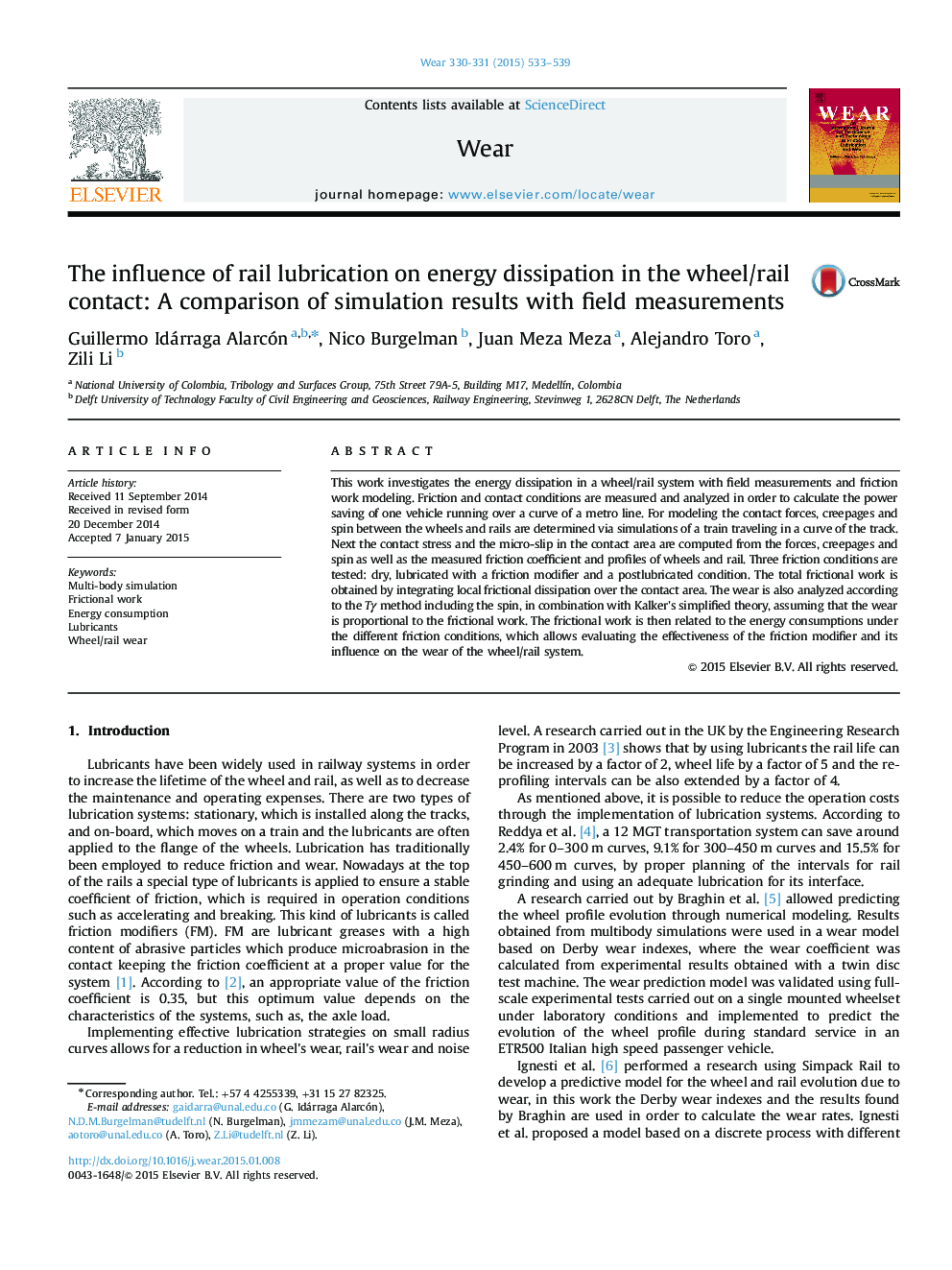| Article ID | Journal | Published Year | Pages | File Type |
|---|---|---|---|---|
| 7004366 | Wear | 2015 | 7 Pages |
Abstract
This work investigates the energy dissipation in a wheel/rail system with field measurements and friction work modeling. Friction and contact conditions are measured and analyzed in order to calculate the power saving of one vehicle running over a curve of a metro line. For modeling the contact forces, creepages and spin between the wheels and rails are determined via simulations of a train traveling in a curve of the track. Next the contact stress and the micro-slip in the contact area are computed from the forces, creepages and spin as well as the measured friction coefficient and profiles of wheels and rail. Three friction conditions are tested: dry, lubricated with a friction modifier and a postlubricated condition. The total frictional work is obtained by integrating local frictional dissipation over the contact area. The wear is also analyzed according to the Tγ method including the spin, in combination with Kalker׳s simplified theory, assuming that the wear is proportional to the frictional work. The frictional work is then related to the energy consumptions under the different friction conditions, which allows evaluating the effectiveness of the friction modifier and its influence on the wear of the wheel/rail system.
Related Topics
Physical Sciences and Engineering
Chemical Engineering
Colloid and Surface Chemistry
Authors
Guillermo Idárraga Alarcón, Nico Burgelman, Juan Meza Meza, Alejandro Toro, Zili Li,
